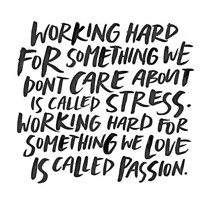
You’ve seen the signs employees who were once highly engaged and productive now seem emotionally and physically exhausted.
They’ve become cynical, irritable, distracted, apathetic, and inefficient. Workplace stress comes from many sources including heavy workloads and tight deadlines.
It’s been a problem for companies during these stressful times, and it’s not getting better. A few sobering facts:
- Young people say burnout is one of the top three reasons they’re quitting. A recent Deloitte survey found that 24% of millennials and a whopping 40% of GenZers are considering quitting their jobs within the next two years.
- In the same survey, 77% of respondents say they’ve experienced burnout at their current company, and 50% of them cite multiple occurrences. 77% of millennials say they have burnout.
- 86% of remote employees complain of burnout
- Employees who feel burned out are 63% more likely to use sick days and 23% more likely to end up in an emergency room.
- In 2021, almost 3 in 5 employees (59%) said they experienced negative impacts from work-induced stress during the previous month, including trouble focusing, a lack of motivation, interest, or energy, and reduced work effort.
Given that 57% of employers say burnout has a direct impact on turnover and retention, quite possibly, you’ve already seen the trends.
So how important is it to recognize and prevent burnout? Well, if you want to retain your high achievers, it’s a no-brainer.
What are the signs of employee burnout?
Chances are, you may be missing some of the early signs because there are three phases of employee burnout. The two earliest are most difficult to spot.
Here are the three phases:
- Low risk: Employees remain engaged. They have low but manageable stress levels.
- Moderate risk: Employees continue being engaged, but they may be unfocused due to stress.
- High risk: Employee stress is unmanageable.
So, you can likely see the importance of building safeguards to support employees during the first two stages. It’s crucial to be proactive.
You’ll find it’s way harder to address the issue during the high-risk phase.
What are burnout’s common causes and how do we combat them?
PROBLEM: Overload
When employees feel there’s never enough time in the day to complete their workload, they soon start to feel stressed out, unfocused, and exhausted.
They begin to drop balls and their projects suffer.
Solutions
- Ask managers to review the employee’s work situation with honesty and empathy. Is everything the employee is doing absolutely necessary?
Are there tasks on their plate that the manager can relieve them of?
Can any deadlines be pushed back? Can mandatory meetings be shortened or even scrapped altogether? Can you hold walking meetings in the great outdoors? - Build opportunities for relaxation into your stressed employees’ day. Yoga, mindfulness, meditation, and tai chi are all wonderful practices for lowering stress even in small doses. 10-15 minute mindfulness exercises in the middle of the day give everyone the opportunity to take a hard pause.
- Holding events like healthy cooking demonstrations can provide both a beneficial takeaway and a much-needed break to unwind.
- Offer educational resources on stress-mitigation strategies like getting better sleep, more exercise, and maintaining positive social relationships.
Remember though, you can “yoga-fy” a company all you like, but if the workplace environment is toxic, these activities won’t help. You can best utilize them within a robust culture of health.
PROBLEM: Pressure
Many employees feel continually under pressure to perform, particularly if they are involved in high-stakes/high-value projects.
They sit at their desks with furrowed brows and fret about the next deadline. When the pressure builds up over time, they become at greater risk for burnout.
Solutions
Be a crusader for work/life balance (and practice it yourself!). The day before a holiday shut down early. Institute “unplugged” initiatives, so employees can enjoy a reprieve from cell phone dings and the constant drip of email.
Create mindfulness spaces where employees can wind down in solitude in a low-lit and comfy area.
- Track employees’ days off and vacation time, and motivate those who haven’t taken time off recently to get some needed rest. Encourage mental health days.
- To combat employee burnout, Ashton Adair, Director of Culture and First Impressions at Mojo Media Labs, started home “hump days.” It allowed his people to work remotely on Wednesdays, so they could decompress from the bustle of the office and enjoy some solitude. As he explains to SHRM, it increased brain power and productivity and alleviated problems of fatigue and engagement.
PROBLEM: Ineffective management
When employees lack consistent, empathetic support, their stress levels can skyrocket. If their manager doesn’t offer constructive feedback, practice fairness, and encourage autonomy in decision-making or worse, micromanage them employees are apt to seek a job elsewhere.
Sometimes managers are stressed and overwhelmed, which only compounds the problem.
Solutions
Many managers need empathy training and development and, importantly, training on how to demonstrate empathy toward employees.
There are a few simple ways to help managers hone their empathy skills:
- Teach managers to practice active listening. When employees have managers with standout listening skills, they know they are being heard and feel comfortable expressing their problems and concerns. Good listeners inspire respect and trust.
- Train managers to motivate employees by offering them more work freedom and instilling a sense of purpose. They can create purpose by increasing opportunities for autonomy when employees accomplish tasks, assigning tasks that are meaningful, and encouraging more adaptable work schedules.
It goes without saying that managers also need this kind of treatment from their own superiors.
PROBLEM: External stress
Each of us has family members, personal goals, and aspirations. Even when everything’s going fine at work, stress can get in the way of performance and lead to burnout.
Your employees may be caring for elderly parents or small children. They may be dealing with unmet financial obligations, the death of a loved one, or toxic relationships at home or at work.
All these can make employees distracted, absent, or physically and mentally ill from the toll.
They are exhausted and unfocused, have difficulty making good decisions, and ultimately may move on from the company to handle their personal issues.
Solutions
- Widely promote your employee assistance programs (EAPs) and go beyond posters in the hallways for this effort.
- Provide financial guidance and advocate for fair pay.
- Offer flexible work hours to enable employees to handle outside issues as they arise.
- Allow telecommuting or implement a hybrid home/office approach, which gives employees more time to support themselves and others.
- Encourage mental sanity work breaks and provide emotional support.
- Remind employees to take their paid time off (PTO) to handle stressors outside of work.
- Finally, create a culture of health that promotes a good work/life balance.
So, what kind of difference do burnout prevention and reduction make?
Burnout problems – alone or in combination – impact all of your employees, both directly and indirectly. But especially when your top performers begin to burn out and leave, the whole company suffers.
In the past, it may not have been common to consider a staff’s well-being and emotions, but now employees have begun to expect that kind of care from their employers.
And there’s no doubt that reducing the effects of burnout provides a significant benefit.
Final takeaways
Engaged and happy employees drive tangible business results – they are focused, energized, and enthusiastic.
They care about their jobs – helping to boost company performance, productivity, and morale.

According to recent Gallup research, companies that have highly engaged employees:
- Realize 21% more profitability
- Outperform competitors by 147%.
Those stats are hard to argue with. And it’s why you can’t afford to ignore the signs of burnout – especially in your top performing employees. After all, they’re the ones that have been giving 100% because they care deeply about their work and they’re the employees who are the most costly to lose and replace.
But burnout needs to be addressed in all your employees. It’s why I urge you to focus on some of the solutions above. How about it?
As always, I am here to help guide your process.
To your health!



